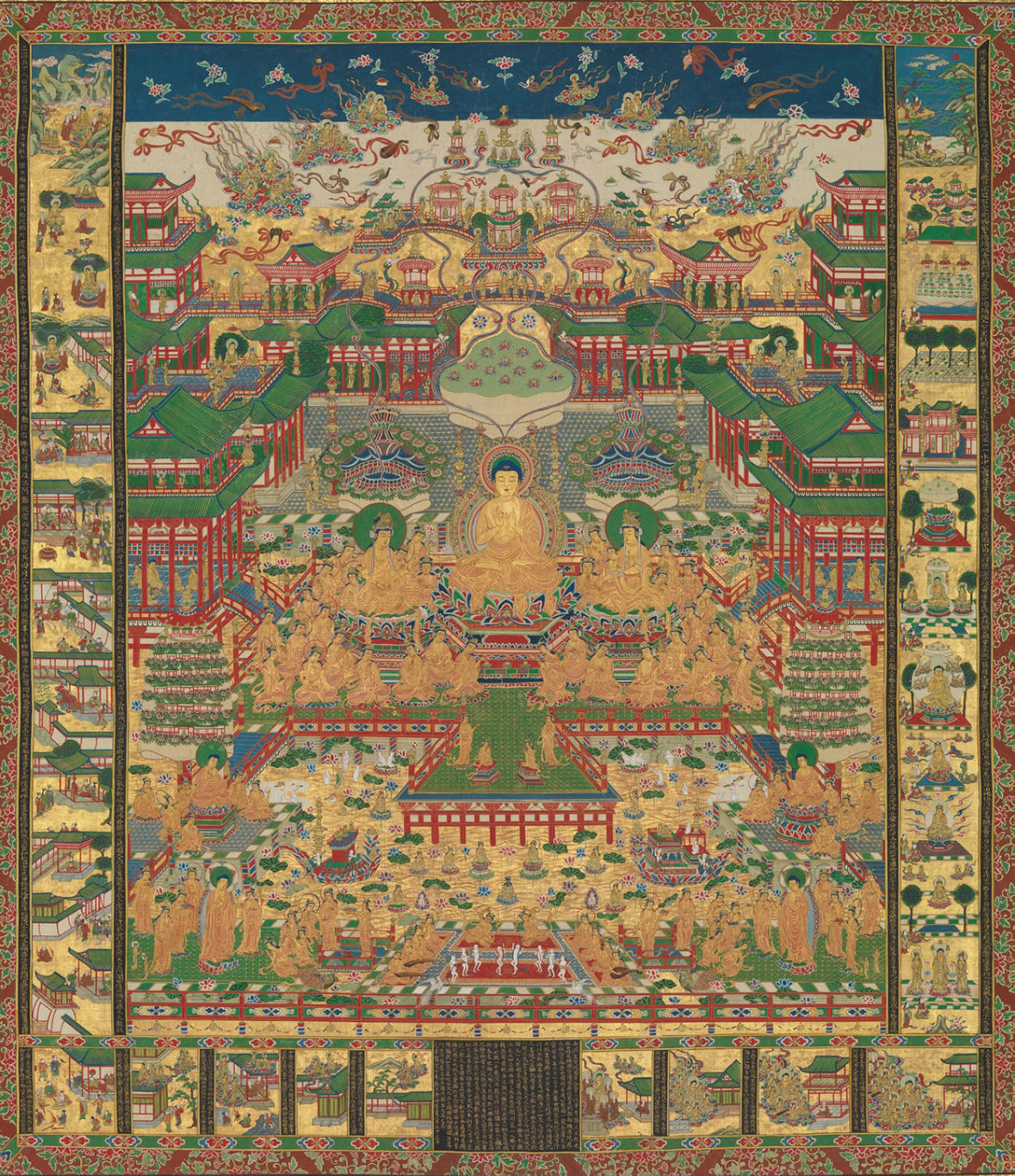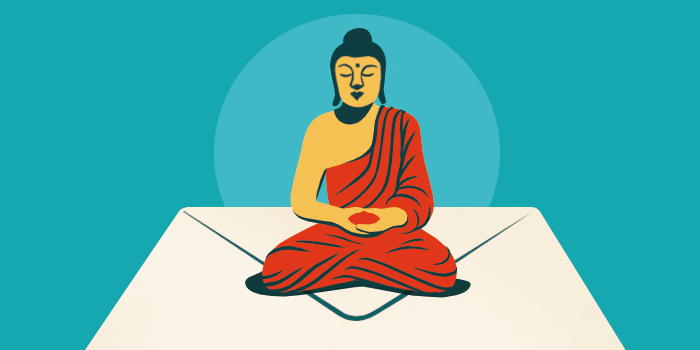What is the Pure Land?

Amida Buddha sits in the center of his Pure Land, the “blissful land.” Pure Land teaching holds that enlightenment is much easier to achieve in Amida’s Pure Land than elsewhere. | The Metropolitan Museum of Art, Charles Stewart Smith Collection.
The concept of a “pure land” in Mahayana Buddhism, and notably in schools that developed in East Asia, refers to a spiritual domain or “field” generated by a buddha in which the path to enlightenment is much easier than elsewhere—even effortless. In fact, being in the buddha’s presence is sufficient to achieve liberation.
The Pure Land of Amida Buddha, or Amitabha Buddha—one of the most venerated buddhas in the Mahayana tradition—is Sukhavati, literally “blissful land.” Sukhavati is a domain where all wishes are fulfilled; it is not as a reward paradise, however, but rather a place where the practitioner experiences life more intensely within the buddha’s field of influence and so arrives more quickly at complete liberation. The Pure Land can, therefore, be a kind of last stop before enlightenment.
Since Pure Land Buddhists believe in rebirth, they want to be reborn somewhere good in their next life and believe Sukhavati is the best possible place to be reborn. Furthermore, Amida Buddha has promised to admit anyone to this land who sincerely turns toward him and longs to be born there.
An implication of these beliefs is that if one feels accepted by Amida and confident that Sukhavati is one’s true home to which one will soon return, there is a natural tendency to try to make wherever one is now into a kind of miniature version of this blissful land. Consequently, Pure Land Buddhism has been associated with social reform or even political revolution at times in history, as when the Chinese White Lotus societies helped organize the revolution that expelled the Mongols from China and restored the Ming Dynasty.

Tricycle is more than a magazine
Gain access to the best in sprititual film, our growing collection of e-books, and monthly talks, plus our 25-year archive
Subscribe now